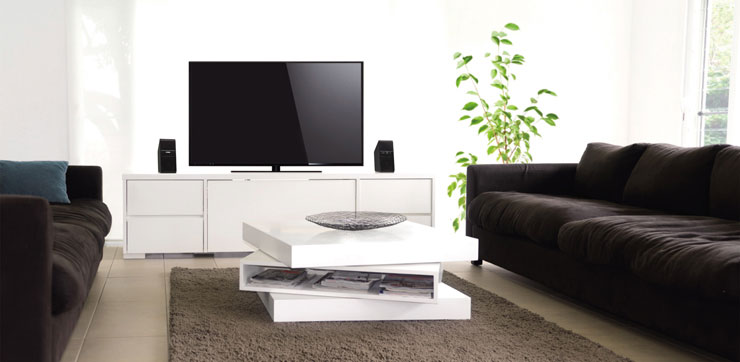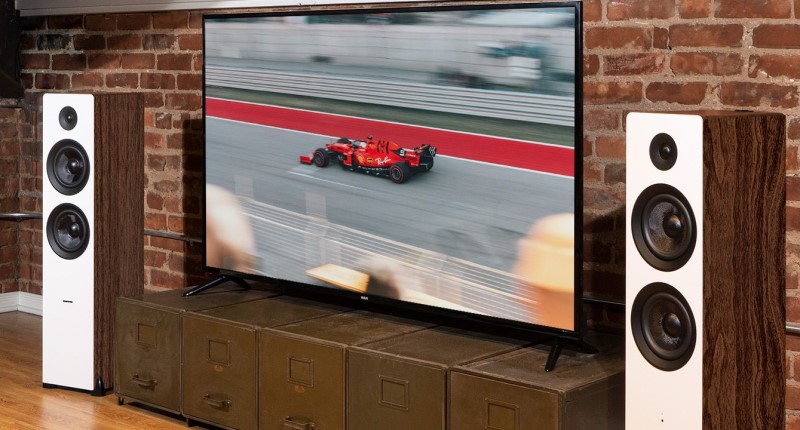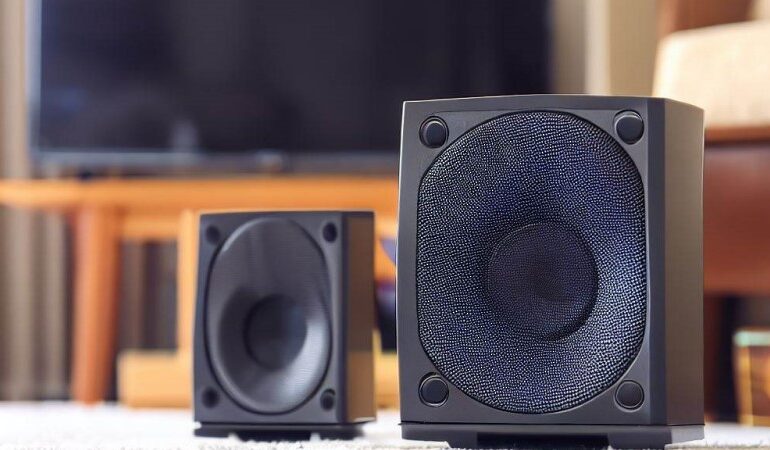I Love My Computer Speakers, Should I Get Some For My TV?
When something ain’t broke, why fix it? You upgraded your computer speakers and, when you did, you did a bunch of research. You ended up with some speakers that are small, powerful, and sound pretty darn good to you! They sound so good, in fact, that it makes your TV (which is just using the internal speakers) sound pretty bad. That’s got you thinking, if you love your computer speakers so much, should you get another pair for your TV? Let’s discuss!
Try It Out
Before we talk about theory, let’s just get this one out of the way. If you already own the speakers, hook them up to your TV and try them out. You may find that you love them just as much in your living room as you do next to your computer. Sure, it’s a bit of a hassle to swap them over. But you’ll know for sure and you won’t have some random person on the Internet telling you how they think they’ll sound.
But let’s pretend that for whatever reason you can’t demo these computer speakers in your living room. What should you expect?

The Good
There are some reasons why using computer speakers with your TV makes things a lot easier or cheaper (or both).
Self-Powered
Computer speakers generally are self-powered. This means all you need to do is have the requisite output on your TV and you are good to go. No expensive AV receiver, and no confusing setup. You just plug them into your TV, plug the speaker (usually just one of them) into the wall, and you are up and running.
Price
Generally speaking, you can get computer speakers for a lot less than you’d pay for reasonable bookshelf speakers and even the most modest of AV receivers. If you are on a budget, it’s easy to love the low cost of computer speakers when paired with your TV.
Size
Computer speakers are generally pretty small. This makes placing them in your room around your TV very easy. If space is a concern, computer speakers make a lot of sense.
Ease of Setup
We alluded to this before, but setting up computer speakers is fairly easy. Especially when you compare it to setting up an AV receiver and speakers. Often, with a traditional receiver/speaker setup, you’ll want to route all your sources to your receiver. If you’ve already run all your cables to your TV, it is very attractive to just plug in some computer speakers and be done with it.

The Bad
There are, of course, some downsides to using computer speakers (even ones that you love) with your TV.
Speaker Design
Computer speakers are designed for near-field listening. Their sound and output are optimized for a listener being within three feet of the speakers. With you sitting likely much farther away, you may not experience the same sound quality you did while sitting at your computer. They may not sound as clear, their output may be lacking (less volume than you hoped), and the bass response could be underwhelming. Speaking of bass response…
Bass Response
Computer speakers are very small which is a good thing for placement. But small is bad for bass. It is hard to create bass with a small speaker (hence the size of subwoofers). Computer speakers often get around this by pairing two, small, satellite speakers with a bass module. But these bass modules aren’t really capable of playing very low or very loud. Sure, they are enough for your home office. But they won’t fill your living room with bass.
Upgradability
The biggest downside to using computer speakers that you love in your home office with your TV in your living room is upgradability. There is none. You won’t be able to add a center or surround speakers and won’t be able to upgrade to a better subwoofer. You are stuck with what you got. If all you are looking for is slightly better sound from your TV, you might not care. But if there is a chance you’ll want to upgrade down the line, you need to keep this in mind.
The Other Option
We would be remiss not to mention a solution that would allow you to achieve many of the “goods” with fewer of the “bads.” Manufacturers have started putting out self-powered home theater speakers. KEF has a few models out there as does Fluance and others. These would be just as easy to set up, aren’t as expensive (in some cases) as a traditional setup, are designed to be used in larger rooms, and will allow you to pair them with a traditional subwoofer (again, in some cases). Most can be used with an AV receiver (as long as it has pre-outs) so you can upgrade in the future. Yes, they are larger (which does give them the ability to play lower) and they are usually more expensive than computer speakers. But these may be the middle ground that some consumers seek.


